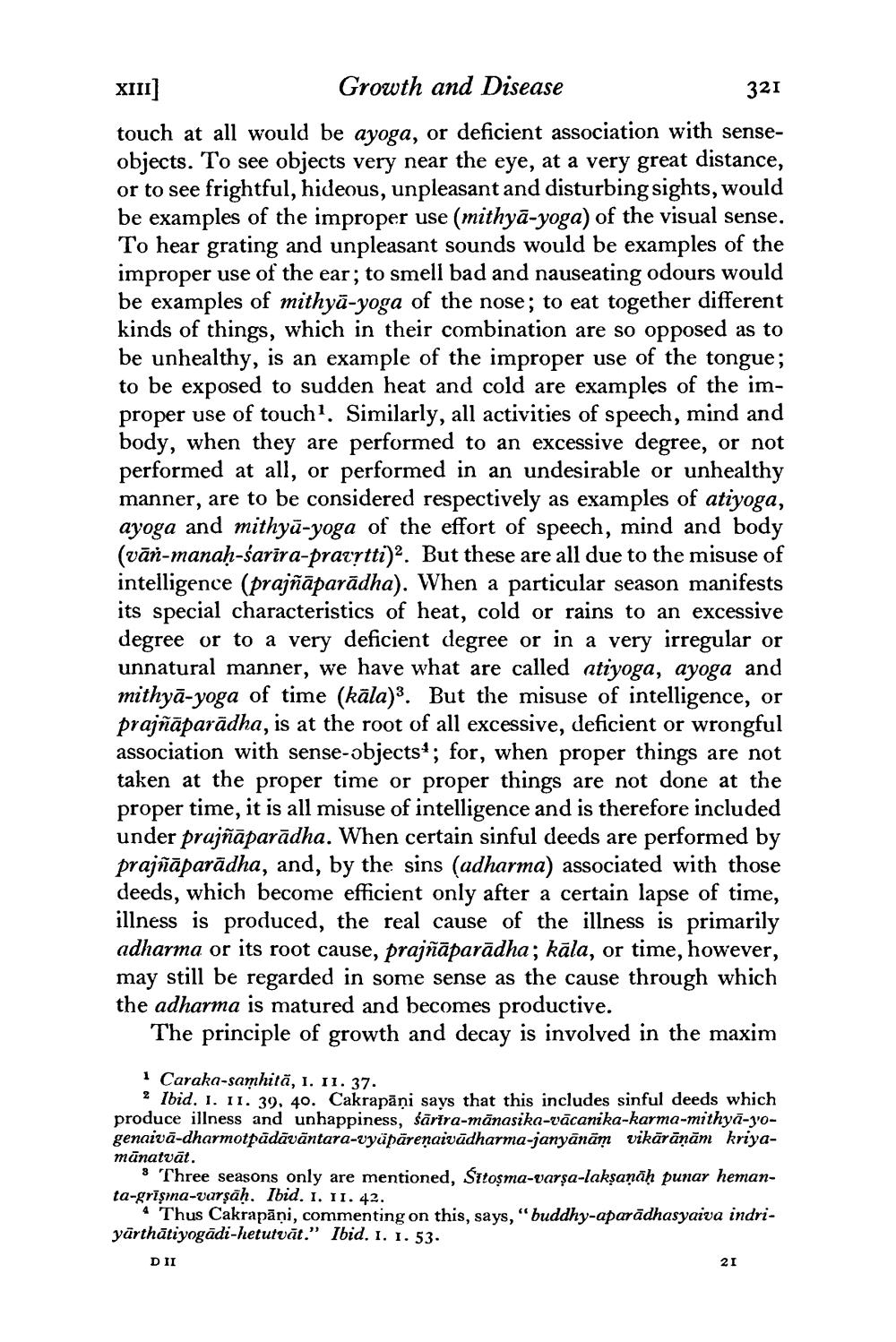________________
XIII]
Growth and Disease
321
touch at all would be ayoga, or deficient association with senseobjects. To see objects very near the eye, at a very great distance, or to see frightful, hideous, unpleasant and disturbing sights, would be examples of the improper use (mithya-yoga) of the visual sense. To hear grating and unpleasant sounds would be examples of the improper use of the ear; to smell bad and nauseating odours would be examples of mithya-yoga of the nose; to eat together different kinds of things, which in their combination are so opposed as to be unhealthy, is an example of the improper use of the tongue; to be exposed to sudden heat and cold are examples of the improper use of touch1. Similarly, all activities of speech, mind and body, when they are performed to an excessive degree, or not performed at all, or performed in an undesirable or unhealthy manner, are to be considered respectively as examples of atiyoga, ayoga and mithya-yoga of the effort of speech, mind and body (vān-manaḥ-sarira-pravṛtti)2. But these are all due to the misuse of intelligence (prajñāparādha). When a particular season manifests its special characteristics of heat, cold or rains to an excessive degree or to a very deficient degree or in a very irregular or unnatural manner, we have what are called atiyoga, ayoga and mithya-yoga of time (kāla)3. But the misuse of intelligence, or prajñāparādha, is at the root of all excessive, deficient or wrongful association with sense-objects; for, when proper things are not taken at the proper time or proper things are not done at the proper time, it is all misuse of intelligence and is therefore included under prajñāparādha. When certain sinful deeds are performed by prajñāparādha, and, by the sins (adharma) associated with those deeds, which become efficient only after a certain lapse of time, illness is produced, the real cause of the illness is primarily adharma or its root cause, prajñāparādha; kāla, or time, however, may still be regarded in some sense as the cause through which the adharma is matured and becomes productive.
The principle of growth and decay is involved in the maxim
1 Caraka-samhitä, 1. 11. 37.
2 Ibid. 1. 11. 39, 40. Cakrapāņi says that this includes sinful deeds which produce illness and unhappiness, sarira-mānasika-vācanika-karma-mithya-yogenaivā-dharmotṭādāvāntara-vyāpāreṇaivādharma-janyānām
vikārāṇām kriya
mānatvāt.
3 Three seasons only are mentioned, Sitoşma-varṣa-lakṣaṇāḥ punar hemanta-griṣma-varṣaḥ. Ibid. 1. 11. 42.
Thus Cakrapāņi, commenting on this, says, "buddhy-aparādhasyaiva indriyarthātiyogādi-hetutvat." Ibid. 1. 1. 53.
D II
21




